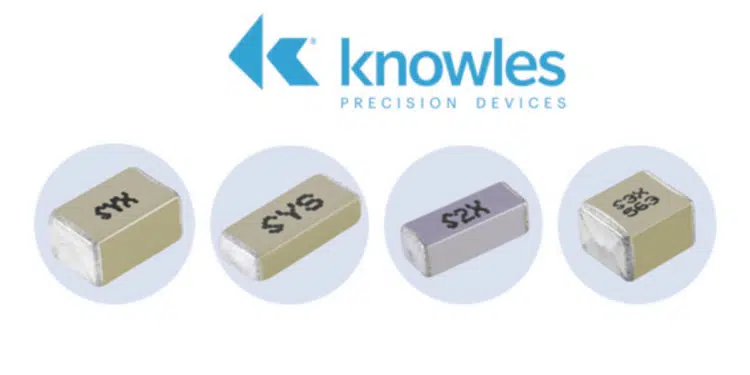Knowles Precision Devices, a division of Knowles Corporation, recently introduced a new expanded range of safety-certified surface mount multilayer ceramic capacitors (MLCCs) for electronic device applications.
The new capacitors offer customers a unique combination of capability and safety certification, and meet the demands of AEC-Q200 standards, modems and AC-DC power supplies where a lightning strike or other voltage transients represent a threat to electronic equipment.
“Our enhanced safety-certified surface mount MLCC product line is tested to meet international safety standards, enabling us to better accommodate the needs of our customers,” said Steve Hopwood, senior applications engineer, Knowles Precision Devices. “We have designed both Class-X and Class-Y MLCCs to help minimize electromagnetic interference (EMI) and radio frequency interference (RFI) in different applications.”
Knowles Precision Devices’ safety-certified MLCCs comply with international UL and IEC/EN specifications, with certification by UL (inc. cUL) and TUV, to ensure safety requirements are met. Additional product benefits include simple pick-and-place assembly, a reduction in required board space and a lower profile.
The new capacitors have a high capacitance range of 4.7pF to 56nF, voltage ratings up to 305Vrms and meet class Y2/X1, X1 and X2 requirements. Within the different subclasses, Knowles Precision Devices offers four separate families of MLCCs with varying specifications. All sizes are available with the option of FlexiCap™ termination. FlexiCap™, the company’s proprietary flexible epoxy polymer termination material, accommodates a greater degree of board bending than conventional capacitors to reduce the risk of mechanical cracking.
Of note in the new range is the higher dielectric withstand voltages (DWV) of 4kVdc & 3kVrms, making these parts particularly suitable for electric vehicle (EV) applications, especially 800V battery systems where an increased test voltage and safety margin is essential. The entire new range is available with AEC-Q200 qualification, an essential requirement for these applications.































